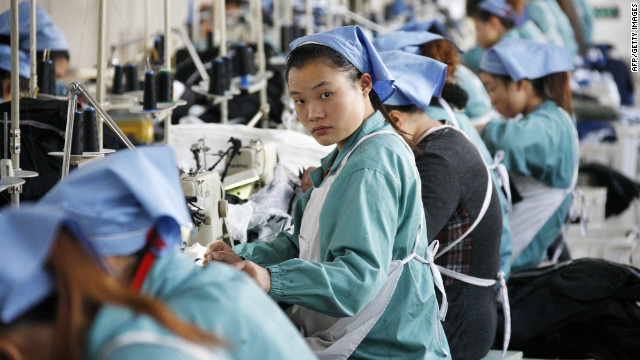|
SINGAPORE, Oct 4 (AFP): Asian textiles, once considered a fading industry, are now showing strong growth prospects thanks to technology and demand from expanding middle classes, a leading industry player said. Known in the past for back-alley shops churning out cheap material, many Asian firms are shedding their sweatshop image as they move to compete in the global market, said Paul Hulme, president of Huntsman Textile Effects (HTE). Stricter environmental standards required by Western countries are also prompting consolidation and innovation in the industry, said Hulme, whose firm is one of the world's top suppliers of textile dyes and chemicals. It moved its headquarters from Basel, Switzerland to Singapore in March to be closer to its Asian customer base. "These sweatshops and poor facilities-that is changing," Hulme told AFP in an interview at the company's corporate offices overlooking Singapore's central business district. "When I visit our customers, I'm impressed with the facilities in terms of the equipment, in terms of the housekeeping standards and the way they treat their employees," he said. "I would not pretend that sweatshops don't exist and I'm sure you can go to parts of India and China where that very much is the case... But I think that image will change." A key driver for the industry's modernisation is Asia's growing middle class, whose clothing tastes are becoming more sophisticated. Hulme said the global textile dyes and chemicals market is worth 16 billion dollars, and Asia accounts for some 45 per cent of the total consumption, much of it destined for export markets outside the region. One year after the global financial crisis exploded, Asian economies are rebounding faster than the West, boosting the textile industry's hopes. The Asian Development Bank (ADB) recently upgraded its forecast for the region's 2009 economic growth to 3.9 per cent. China is forecast to grow 8.2 per cent this year and 8.9 per cent in 2010. "The market is changing, customer taste and demand is changing. For example, as you go into the provinces in China, the spending power is increasing," said Hulme. "In this business, the future is in Asia. It's going to be driven from Asia, not from Europe and America," said Hulme. "You've got to be part of the region." China, Bangladesh and India are the world's top textile producers and are also major consumers. Pakistan and Southeast Asia are important and growing players as well. HTE is moving to further gain market share after sales totalled one billion dollars in 2008. The company's patented products give fabrics used in clothing and industrial materials such as car seats and garden parasols special properties like sharper, deeper and more lasting colours. They can also make clothing resistant to ultra-violet rays and easier to wash, requiring less use of environmentally polluting detergents. "We supply the colours and also the special effects," said Rohit Aggarwal, global vice president for apparel and home textiles at HTE. "You may have something that is wrinkle-free, something which is very soft." Holding up a China-made T-shirt, Aggarwal said: "This one uses a type of chemical that allows the fabric to breathe. You don't get the sweat coming out, but you still get the fresh air going into your body." Apart from apparel, a major driver for the industry is demand for "technical textiles" or fabrics used in cars, mattress covers, bags, tents and parachutes, among others, Hulme said. Car fabrics that do not fade easily even in extreme heat enhance the vehicle's resale value, and there is rising demand for fire-resistant materials in the construction sector as well, he said. In the medical field, chemicals are incorporated in surgeons' gowns to repel blood and dirt, raising the hygiene level. HTE spends about four percent of its total annual sales for research and development, according to Hulme. Its dye production is carried out in facilities in India, Thailand, China, Switzerland and Mexico. Textile chemicals are produced from factories in Germany and China. As Asia's spending power rises, "people want to buy different products and that's going to lead to the development of a whole new market for technical textiles which didn't exist before," said Hulme. The market for technical textiles is likely to grow by 20 per cent per year over the next decade, he said, urging Asian firms to ride the growth by moving up to higher value-added products. |
|
Asian textiles no longer a fading industry
Updated: 2009-10-8 Source: The Financial Express

Recommended News
Photo Gallery
Most Popular



